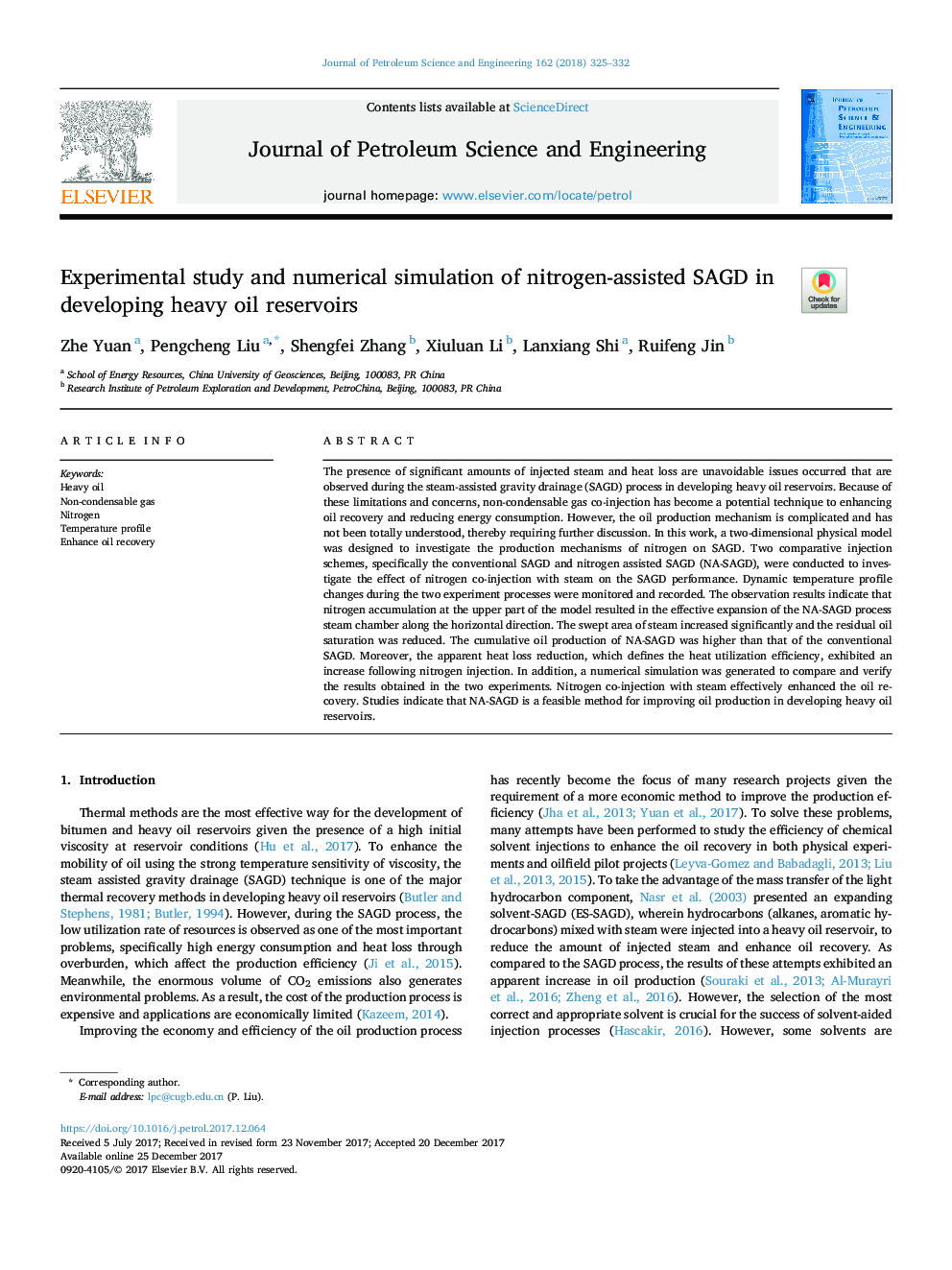| Article ID | Journal | Published Year | Pages | File Type |
|---|---|---|---|---|
| 8125416 | Journal of Petroleum Science and Engineering | 2018 | 8 Pages |
Abstract
The presence of significant amounts of injected steam and heat loss are unavoidable issues occurred that are observed during the steam-assisted gravity drainage (SAGD) process in developing heavy oil reservoirs. Because of these limitations and concerns, non-condensable gas co-injection has become a potential technique to enhancing oil recovery and reducing energy consumption. However, the oil production mechanism is complicated and has not been totally understood, thereby requiring further discussion. In this work, a two-dimensional physical model was designed to investigate the production mechanisms of nitrogen on SAGD. Two comparative injection schemes, specifically the conventional SAGD and nitrogen assisted SAGD (NA-SAGD), were conducted to investigate the effect of nitrogen co-injection with steam on the SAGD performance. Dynamic temperature profile changes during the two experiment processes were monitored and recorded. The observation results indicate that nitrogen accumulation at the upper part of the model resulted in the effective expansion of the NA-SAGD process steam chamber along the horizontal direction. The swept area of steam increased significantly and the residual oil saturation was reduced. The cumulative oil production of NA-SAGD was higher than that of the conventional SAGD. Moreover, the apparent heat loss reduction, which defines the heat utilization efficiency, exhibited an increase following nitrogen injection. In addition, a numerical simulation was generated to compare and verify the results obtained in the two experiments. Nitrogen co-injection with steam effectively enhanced the oil recovery. Studies indicate that NA-SAGD is a feasible method for improving oil production in developing heavy oil reservoirs.
Related Topics
Physical Sciences and Engineering
Earth and Planetary Sciences
Economic Geology
Authors
Zhe Yuan, Pengcheng Liu, Shengfei Zhang, Xiuluan Li, Lanxiang Shi, Ruifeng Jin,
